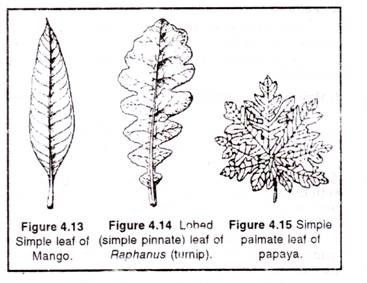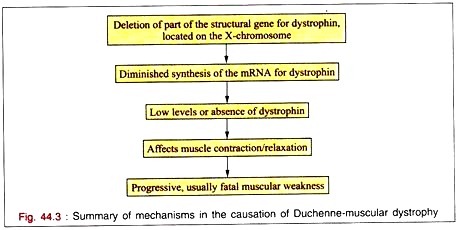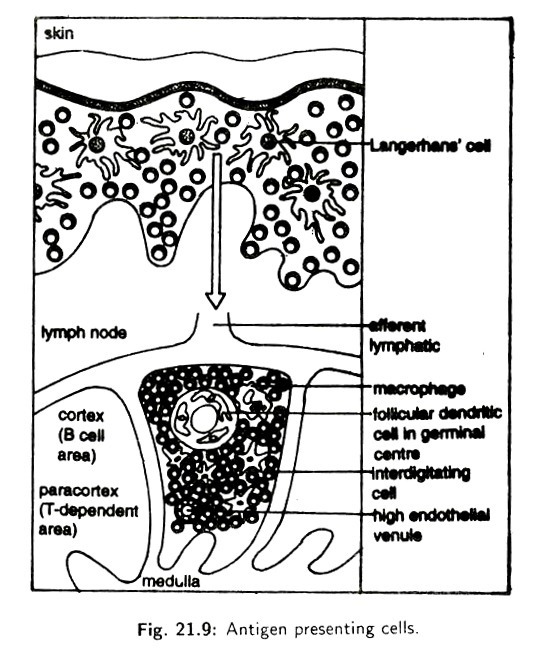ADVERTISEMENTS:
Read this article to learn about Structure of a Typical Leaf !
A typical leaf or phyllopodium has 3 parts – leaf base, petiole and lamina.
It is the basal part of leaf by which it is attached to the node of the stem or its branches.
ADVERTISEMENTS:
Usually it protects a small bud in its axil. In many plants, it is not demarcated from the petiole. Some common types of leaf bases found in angiosperms are given below.
1. Pulvinus:
ADVERTISEMENTS:
In some plants, e.g., legumes, tamarind, Mimosa (Fig. 4.2-A), mango, banyan, gold- molhur etc., the leaf base becomes distinctly swollen and forms a broadened cushion-like structure, the pulvinus, (Fig. 4.2.-8).
2. Sheathing Leaf Base:
In many plants the leaf base expands into a sheath which partially or wholly clasps the stem. This sheathing leaf base is of frequent occurrence among monocotyledons. The sheathing leaf base encloses the stem for some distance above the node (Fig. 4 .2-C). Some important examples are Zea mays, sugarcane, wheat, banana etc. In banana, sheathing of many leafs jointly makes a stem like structure known as false stem (pseudostem). True stem of banana is an underground stem.
Sheathing leaf base may be of two types:
(i) Auriculate or Semiamplexicaul:
In this type of leaf base, the sheathing leaf base only partially encloses the stem (Fig. 4.2 E).
(ii) Amplexicaul:
This type of leaf base completely encloses the stem, e.g., Sonchus (Fig. 4.2-1) Polygonum etc.
3. Decurrent Leaf Base:
ADVERTISEMENTS:
In some plants petiole and leaf base, both become broad, Hat and winged. These ensheath the upper part of node, e.g., Symphytum (Fig. 4.2.-G) Crotolaria etc.
II. Petiole (Mesopdium):
Petiole is the leaf stalk that pushes the lamina to secure proper sunlight. Leaves with petiole are known as petiolate, while those without petiole are called sessile (e.g., rice, wheat etc.). The petiole may be hollow (in papaya); winged (in citrus); teadrillax (in Nepenthus, Clematis); spongy (in Eichornia, Trapa). In Australian acacia (Acacia auricular form is) and Parkinsonia petiole is modified into a leaf-like structure called phyllode.
III. Lamina (Epipodium):
ADVERTISEMENTS:
Lamina or leaf blade is a thin, flat, green expanded part of the leaf. The most prominent vein present in the middle of lamina running from its base to apex is called mid rib. A number of lateral veins arise from the mid-rib which branch further to form veinlets. The veins and vinelets not only support but also conduct water, minerals and food thought the leaf. The upper (ventral) surface of lamina is called adaxial while lower (dorsal) surface is called abaxial.
Stipules:
Stipules are the lateral appendages of the leaf borne at its base. They are present in many families of dicotyledons, but they are absent or very rare in monocotyledons. When these stipules are present, the leaf is said to be stipulate and when absent exstipulate. Sometimes, as in Cltioria, a small stipule may be present at the base of each leaflet. Such a small stipule is otherwise known as a stipel.
Kinds of Stipules:
ADVERTISEMENTS:
According to their shape, position, colour and size, stipules are of the following kinds:
1. Free Lateral Stipules (Fig. 4.3):
These are two free stipules, usually small and green in colour, borne on the two sides of the leaf-base, as in China rose (Hibiscus), cotton, etc.
2. Scaly stipules:
ADVERTISEMENTS:
Two small and dry scales arising laterally from the base of the leaf e.g. Desmodium gyrans, Desmodium gangeticum, spergula etc. (Fig. 4.4).
3. Adnate Stipules:
Sometimes the two lateral stipules grow along the petiole and remain adnate to it giving the petiole winged appearance e.g., rose, Arachis hypogea (ground nut) etc. (Fig. 4.5)
4. Interpetiolar Stipules:
The two stipules arising in between the petioles of two opposite leaves, e.g., Ixora, Anthocephalus etc. (Fig. 4.7)
5. Intrapetiolar Stipides:
ADVERTISEMENTS:
These stipules are situated between the petiole and the axis, e.g., Gardinia, Tabernaemontana etc. (Fig. 4.7).
6. Ochreate Stipules:
In some plants, such as Polygonum and Rumex, the stipules form a sort of hollow tube around the stem from the node upto a certain length of the internode. (Fig. 4.8)
7. Foliaceous Stipules:
Sometimes, the stipules take the shape of green, leafy structures, such as in pea. (Fig. 4.9)
ADVERTISEMENTS:
8. Bud-scales or Convolute Stipules:
The scaly stipules which occur on ventral side of petiole and enclose and protect the vegetative buds during early stages of development, and fall-off soon after the leaf primordia enlarge and unfold, e.g., Magnolia, Ficus, Ricinus etc. (Fig. 4.6).
9. Spinous Stipules:
In some plants the stipules get modified into spines, e.g., Ziziphus, Barleria, Acacia etc. (Fig. 4.10).
10 . Tendrillar Stipules:
These are modified into tendrils. Usually one such stipules lies in each side of the petiole e.g Smilax(fig 4.11)
Venation:
The arrangement of veins and veinlets in the leaf lamina is called venation. It is of two types – Reticulate and Parallel.
In this type, the veinlets form a network in the lamina. It is the characteristic of most dicot leaves except Calophyllum. Some monocots like Colocasia, Dioscorea and Smilex show reticulate venation.
On the basis of number of mid-rib (main vein or costa), the reticulate venation is of two types:
(A) Pinnate or Unicostate Reticulate Venation:
In this type the lamina has a single prominent mid-rib running from the base to the apex. The lateral veins and veinlets arise on both sides of midrib forming a reticulum (mesh or network; e.g., China rose, mango, peppal etc.
(B) Palmate or multicostate reticulate venation:
In this type, the lamina has more than one equally prominent mid-rib. It is again of two types.
(i) Convergent types:
When all the mid-ribs diverge out from the leaf base but again converge towards the apex of the lamina e.g. Smilax, Ziziphus, and Cinnamomum etc.
(ii) Divergent type:
When all the mid-ribs diverge out from the leaf base and do not converge towards the apex, e.g., papaya, castor, cucumber etc.
II. Parallel Venation:
In this type, the veins arising from the mid-rib tend to run parallel to each other and do not form a network. It is the characteristic of monocot leaves except Smilax, Arisaema, and Dioscorea etc.
On the basis of number of mid-rib, the parallel venation is of following two types:
(A) Pinnate or Unicostate Parallel Venation:
In this type, lamina has a mid-rib in the centre. Lateral veins come out perpendicular to the mid-rib, which run parallel to each other towards margin or apex of lamina; the lateral veins do not anastamose, e.g., Carina, Musa (Banana).
(B) Palmate or Multicostate Parallel Venation:
Here, the lamina has numerous equally prominent veins arising from the tip of the petiole and running parallel towards the leaf apex or laminatnargin.
They do not branch. It is again of two types:
(i) Convergent type:
In this type, all mid-veins run parallel to each other from the base of lamina and unite (converge) at the apex, e.g., Bamboo Rice, grass, Eichornia etc.
(ii) Divergent type:
In this type the main veins arise from the tip ‘of the petiole and proceed (diverge) towards the margin of the leaf blade in a more or less parallel manner as in fan palms such as palmyra palm.
Simple & Compound Leaves:
(I) Simple Leaf:
A leaf is said to be simple when it consists of a single blade which may be entire or incised (and, therefore, lobed) to any depth, but not down to the mid-rib or the petiole. Mango, Cucurbita, Guava etc., are the examples of simple entire leaves (Fig. 4.13).
Incised or lobed leaves again may be of two types:
(i) Simple pinnate leaf:
When the direction of incision is towards the mid-rib, e.g., Raphanus sativus (turnip).
(ii) Simple palmate leaf:
When the direction of incision is towards the petiole, e.g., Ricinus (Castor), Carica papaya (Papaya)
(II) Compound Leaf:
In a compound leaf, the incision of the leaf-blade goes down to the mid-rib (rachis) or to the petiole so that the leaf is broken up into a number of segments, called leaflets, these being free from one another, i.e., not connected by any lamina, and more or less distinctly jointed (articulated) at their base.
On the basis of incission, compound leaves are of two types:
(A) Pinnately Compound Leaf:
1. Pinnately Compound Leaf:
A pinnately compound leaf is defined as the one in which the mid-rib, known as the rachis bears laterally a number of leaflets, arranged alternately or in an opposite manner, as in tamarind, gram, gold mohur, rain tree, senstivie, plant, gum tree (Acacia), Cassia etc. (Fig. 4.16 A to E). It may be of the following types:
(i) Unipinnate:
When the mid-rib of the pinnately compound leaf directly bears the leaflets, it is said to be unipinnate. In it the leaflets may be even in number (paripinnate), as in Cassia, Saraca (B. Asok; H. Seeta-asok), Sesbania (B. Lak phul; H. Agast), etc., or odd in number (imparipinneate), as in rose, margosa (Neem) etc.
The pinnate leaf is said to be unifoliate, when it consists of only one leaflet, as in Desmo-dium gangeticunm: bifoliate or unijugate (one pair), when of two leaflets, as in Balanites (fig. 1.86) and sometimes in rose; trifoliate or ternate, when of three leaflets, as in bean, coral tree (Erythrina) and wild vine (Vitis trifolia). It may similarly be quadrifoliate, pentafoliate or multifoliate, according as the leaflets are four, five or more in number.
(2) Bipinnate:
When the compound leaf is twice pinnate, i.e. the midrib produces secondary axes which bear the leaflets, it is said to be bipinnate, as in dwarf gold mohur (Caesal-pinia), gum tree (Acacia), sensitive plant (Mimosa), etc.
(3) Tripinnate:
When the leaf is thrice pinnate, i.e. the secondary axes produce the tertiary axes which bear the leaflets, the leaf is said to be tripinnate, as in drumstick (Moringa), and Oroxylurn
(4) Decompound:
When the leaf is more than thrice pinnate, it is said to be decompound, as in anise, carrot, coriander, Cosmos etc.
(B) Palmately Compound Leaf (fig. 4.18):
A palmately compound leaf is defined as the one in which the petiole bears terminally, articulated to it, a number of leaflets which seem to be radiating from a common point like fingers from the palm, as in silk cotton tree, lupin, Gynandropsis, etc.
On the basis of number to leaflet, a palmately compound leaf may be of the following types:
(1) Unifoliate:
In this type only one leaflet is attached on the apex of lamina, e.g., Citrus (lemon). In the leaves of these plants leaflets are present in primary stage, so palmate habit appears in these plants.
(2) Bifoliate (Fig. 4.17):
In this type, two leaflets are present on the apex of the petiole, e.g., Balanitis, Hardwickia, Bignonia grandiflora, Princepia etc.
(3) Trifoliate or Ternate:
In this type three leaflets are arranged on the apex of petiole, e.g., Aegle marmelos, Medicago, Hydrocotyle, Trifolium and Desmodium.
(4) Quadrifoliate:
In this type, four leaflets are present on the apex of petiole, e.g, Paris quadrifoliata, Marsilea (a pteridophyte, not angiosperm).
(5) Multifoliate:
In this type, more than four leaflets are present on the apex of petiole, e.g., Bombax, Gynandropsis, Cleorne, Lupin etc.









